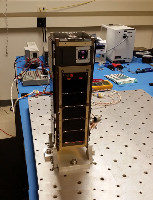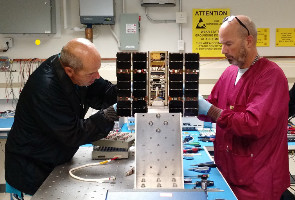| Name | IceCube (Earth-1) |
|---|---|
| Type | CubeSat |
| Units or mass | 3U |
| Status | Reentry 2018-10-03. Was operational (Official presentation during Smallsat) |
| Launched | 2017-04-18 |
| NORAD ID | 42705 |
| Deployer | NRCSD (NanoRacks CubeSat Deployer) [Quad-M] |
| Launcher | Atlas V |
| Deployment | Deployed from ISS on 2017-05-16 |
| Entity name | NASA Goddard Space Flight Center |
| Institution | Space agency |
| Entity | Government (Civil / Military) |
| Headquarters | US |
| Launch brokerer | Nanoracks |
| Partners | Virginia Diodes, NASA Earth Science Technology Office |
| Oneliner |
Demonstrate 883-gigahertz submillimeter-wave receiver to measure atmospheric ice. |
| Description |
Demonstrate and validate a new 883-gigahertz submillimeter-wave receiver that could help advance scientists’ understanding of ice clouds and their role in climate change. IceCube will lead to the development of an instrument capable of providing an accurate daily assessment of the global distribution of atmospheric ice. Knowing this distribution will help scientists describe the linkage between the hydrologic and energy cycles in the climate system. Ice clouds ultimately are a product of precipitating cloud systems and dramatically affect Earth’s emission of infrared energy into space and its reflection and absorption of the sun’s energy. To this day, the amount of atmospheric ice on a global scale remains highly uncertain. |
| Notes |
Deployed from ISS on 2017-05-16. Not to be confused with the failed ICECube 1 and 2 nanosatellites. |
| Sources | [1] [2] |
| Photo sources | [1] [2] |
| On the same launch |
|
Last modified: 2023-06-09


